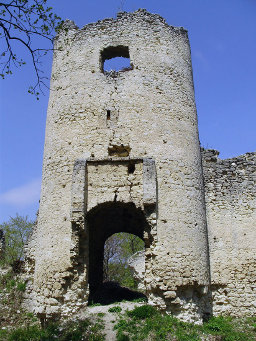Code of project: 019-0190610-0590
Leading researcher: dr. sc. Irena Benyovsky Latin
Reg. number at MZOS: 219806
E-mail.: irenabenyovsky@yahoo.com
Status of project: project within program
Program: Spomenička i socijalna topografija hrvatskoga srednjovjekovlja
Affiliation: Hrvatski institut za povijest
Department: Odjel za srednjovjekovnu povijest
Duration of project: 5 years
While political history of medieval towns is a relatively well researched topic in Croatian historiography, social factors that had shaped the urban space have received little attention. The aim of this project is to analyse urban development in Croatian Middle Ages. The focus in this 5 years project-period is on towns in Central and Southern Dalmatia (Zadar, Šibenik, Trogir, Split and Dubrovnik) in the late Middle Ages, C12-C15. Main research themes include relations between the urban society and urban topography, development of urban institutions and everyday urban life. We introduce the term social topography for the distribution of certain social structures in the towns, which should in turn reflect legal, demographic and architectural processes in town. The information gathered from sources is used to build a computer database. By analyzing social structures in towns, we reveal the political and social position of a social group, its family liaisons and its structure. The role of foreigners (such as the Albanian artist A. Alessi) and marginal groups is also investigated (such as sick and poor). Importantly, the citizenry, a social group that has not been systematically investigated in Croatian historiography, is given significant attention. Certain unplanned events (such as epidemics) and everyday life had ad hoc impact on the development of the towns. The C14 plague and its impact on the Croatian medieval society, population and urban topography is a novel topic that must be analysed within the broader European context. All aforementioned processes determined the development of urban institutions: hospitals and fraternities, or institutions for construction of buildings. The project aims to introduce new methods, to define relevant terminology and to place the Dalmatian town into the context of Croatian Middle Ages. It also aims to compare Croatian town with Mediterranean, especially Italian, town and its social, institutional and topographical development. Research based on the literature, archival and material sources in collaboration with Croatian and international scholars (with whom we plan to publish joint publications and co-organize conferences) helps better define the Croatian medieval town and place it on the European map.
Key words:
Croatian Middle Ages|town, topography and urbanism,society and everyday life, citizenship,diseases and epidemics
- dr. sc. Irena Benyovsky Latin, leading researcher
- dr. sc. Ante Birin
- dr. sc. Zrinka Pešorda Vardić
- dr. sc. Gordan Ravančić
- Bruno Škreblin, prof.
- Sandra Begonja, prof.
Visiting researchers:
- academician Zef Mirdita
- Prof. dr. John Henderson

